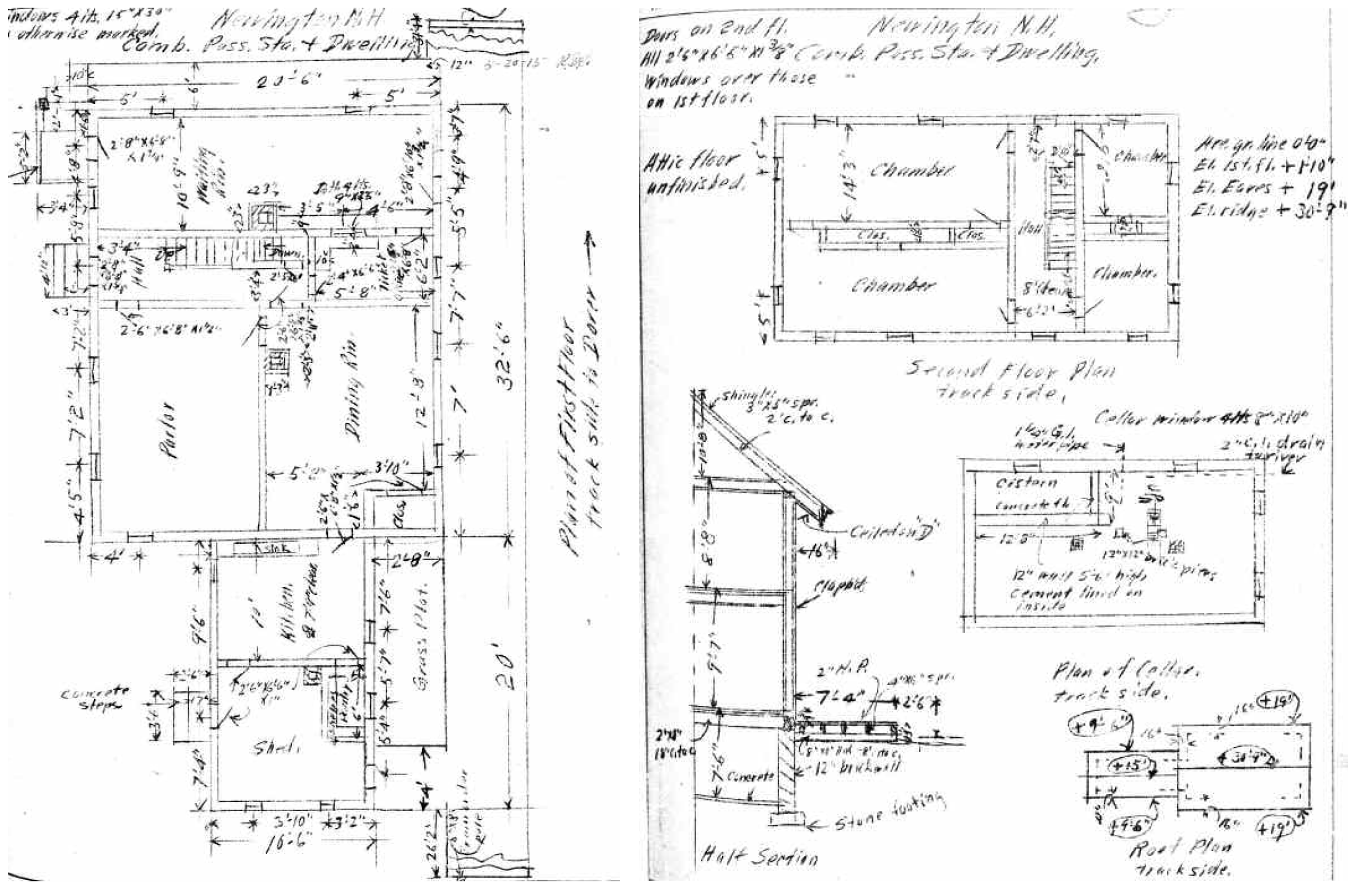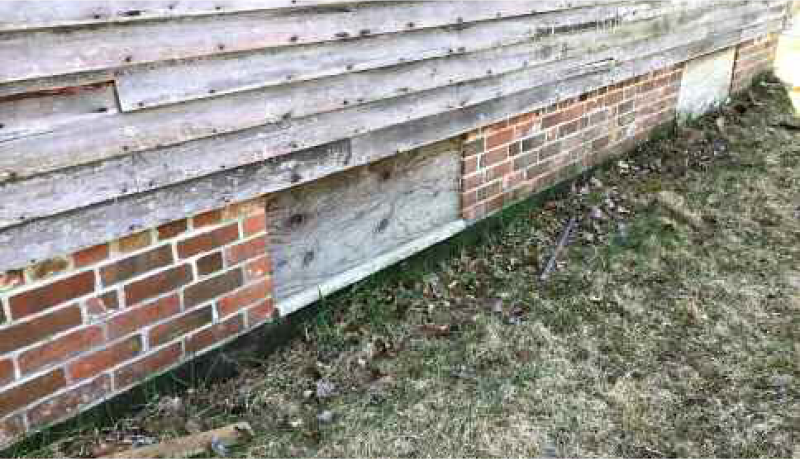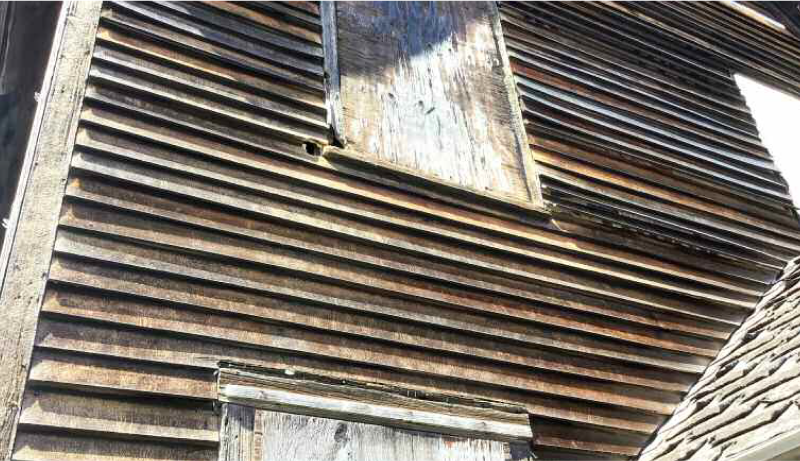Planning Process
The present moment offers a unique opportunity to preserve the Railroad Depot: due to Section 106 historic mitigation requirements surrounding the General Sullivan Bridge, the property can be transferred to a public entity at no charge. If such a transfer does not take place, NHDOT would retain any income resulting from a possible sale.
The State of New Hampshire is in the process of producing a building assessment and land map for the preservation of the depot. This map should be ready by year-end 2022. Within Newington there is, unfortunately, considerable opposition to preserving this property. The Selectmen resist “burdening” the town and taxpayers with another historic building to maintain.
The Newington Historical Society would be the best entity to own and manage the long-term preservation of the railroad depot property, because preserving Newington’s historical resources and educating the public is what the Society wants to do and has done for more than 100 years. However, the Society needs to work with a public partner for the property transfer.
The Concept for Bloody Point Park
The Newington Historical Society and Historic District Commission are interested in creating a Bloody Point Park. The Railroad Depot would house a museum on its ground floor, displaying photographs and documents related to historic bridges, New Hampshire’s railroads, and to the 400-year maritime history of crossing the Piscataqua.
Just as the Railroad Depot once encompassed a public area on the first floor and private living quarters upstairs, the building’s second floor would house a caretaker’s residence or rental housing. A public park surrounding the building would feature signage identifying ferry routes, and remnants of old bridges, and would describe the structures and vehicles once used at this vital transportation site. Cleared of encroaching vegetation, the site would offer attractive views of the Piscataqua and public access to the waterfront.
The depot property could also include facilities making this a suitable venue for events such as graduation parties and school picnics. Rental of event space or living quarters in the Depot could provide income to maintain the site.
General cleanup and removal of fallen trees and limbs
Creating nature trails along the shoreline will require the removal of fallen trees and debris, which will hopefully be done with volunteers. A tree company will be needed to remove larger dead trees and invasive species.
Shoreline erosion
A long-term goal is to find the funds to stabilize two areas of shoreline erosion. This project would occur after the building is stabilized and the nature trails are created. Depending on available funding, it would be good to construct a landing area for boats to tie up so people on the river can visit.
Plenty of open areas good for walking trails
Bloody Point is a beautiful spot by the Piscataqua River that has been occupied for almost 400 years. The views and landscape are stunning.
Photo caption.
Building Rehabilitation
The Newington Depot has stood vacant and unused for nearly 50 years. At times the Town of Newington and the State have envisaged making the property an attractive waterfront historic site, but no such plan has come to fruition.
Today threats to the depot are twofold: physical decay after a half-century of neglect, and a lack of ownership committed to saving and rehabilitating the structure.
Although Newington’s Historical Society and Historic District Commission have tried for 50 years to have the property transferred to Newington, all attempts have failed, and the New Hampshire’s Department of Transportation has let the depot fall into a deplorable state.
Path Forward
Transfer of ownership from NH DOT to Newington will be accompanied by significant incentives. Those include a historic preservation easement that would prevent demolition of the building and ensure that its rehabilitation would follow the Secretary of the Interior’s Standards for Historic Preservation.
In addition, DOT would fund and provide to a future owner a site plan and a historic building assessment and transfer the property with a sum up to $150,000 to seed rehabilitation of the building and surrounding acreage.
The Newington Historical Society is actively pursuing preservation of both the building and public access to one of New Hampshire’s earliest waterfront sites dating back to the 1630s. The 2021 Seven to Save designation will support our efforts to raise awareness and build a fundraising network. Plans to create a railroad history museum and to develop public access to Bloody Point will have far reaching efforts beyond the Town of Newington. But our path forward must include professionals and experts beyond those available in Newington who can help us chart a course.
The Newington Historical Society and Historic District Commission have been granted until 2023 to find an ownership and stewardship solution acceptable to NHDOT and the Town of Newington. If we fail during this window of opportunity, the next owner of this historic property will likely be a private party who will leave the depot as an empty shell, build a private estate, and close public access to the Piscataqua River.
Roofs and chimneys
Making the shell of the depot weather-tight is a first priority. The chimneys look in good shape but the clapboards and trim need extensive work.
Foundation and sills
The foundation is in good shape considering the lack of maintenance for decades. However, the land around the building needs to be sloped away so water flows away from the foundation.
Siding, trim, windows and doors
The historic windows and trim need extensive work, likely requiring rehabilitation and/or replacement with historically appropriate materials.
Floors, doors, bannisters, stairs
The interior of the building, including floors, doors, stairs, bannisters, and most wall surfaces, is remarkably intact and preserved. Repairing and refinishing the historic surfaces should be a straightforward joy.
Mechanicals, water, sewer, electric & communications
Major expenses not covered by many preservation grants are the upgrades necessary to bring water, sewer, electrical, HVAC, and Internet services to the building for use by people visiting Bloody Point or those living there.
Take a look at our progress with the Bloody Point Project
We have a long way to go with our ideas but what we have accomplished so far is not insignificant.
Read more about our progress

















